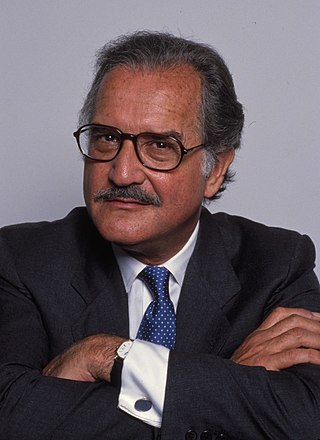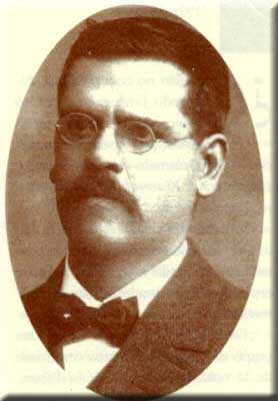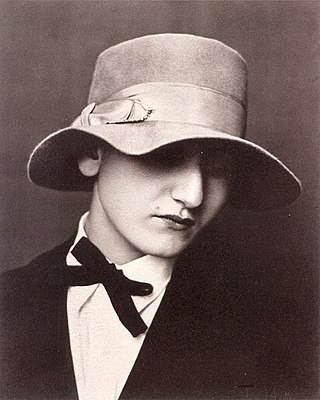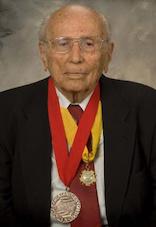
Don Quixote is a Spanish epic novel by Miguel de Cervantes. Originally published in two parts, in 1605 and 1615, its full title is The Ingenious Gentleman Don Quixote of La Mancha or, in Spanish, El ingenioso hidalgo don Quixote de la Mancha. A founding work of Western literature, it is often labelled as the first modern novel and one of the greatest works ever written. Don Quixote is also one of the most-translated books in the world and the best-selling novel of all time.

Miguel de Cervantes Saavedra was an Early Modern Spanish writer widely regarded as the greatest writer in the Spanish language and one of the world's pre-eminent novelists. He is best known for his novel Don Quixote, a work often cited as both the first modern novel and "the first great novel of world literature". A 2002 poll of around 100 well-known authors voted it the "most meaningful book of all time", from among the "best and most central works in world literature".

Octavio Paz Lozano was a Mexican poet and diplomat. For his body of work, he was awarded the 1977 Jerusalem Prize, the 1981 Miguel de Cervantes Prize, the 1982 Neustadt International Prize for Literature, and the 1990 Nobel Prize in Literature.

Carlos Fuentes Macías was a Mexican novelist and essayist. Among his works are The Death of Artemio Cruz (1962), Aura (1962), Terra Nostra (1975), The Old Gringo (1985) and Christopher Unborn (1987). In his obituary, The New York Times described Fuentes as "one of the most admired writers in the Spanish-speaking world" and an important influence on the Latin American Boom, the "explosion of Latin American literature in the 1960s and '70s", while The Guardian called him "Mexico's most celebrated novelist". His many literary honors include the Miguel de Cervantes Prize as well as Mexico's highest award, the Belisario Domínguez Medal of Honor (1999). He was often named as a likely candidate for the Nobel Prize in Literature, though he never won. His parents were both Mexicans.
Gregorio López Fuentes was a Mexican novelist, poet, and journalist. He was one of the leading chroniclers of the Mexican Revolution.

A caudillo is a type of personalist leader wielding military and political power. There is no precise English translation of caudillo, though it is often used interchangeably with "warlord" and "strongman". The term is historically associated with Spain, and with Hispanic America after virtually all of the region won independence in the early nineteenth century.

Mexican literature is one of the most prolific and influential of Spanish-language literatures along with those of Spain and Argentina. Found among the names of its most important and internationally recognized literary figures are authors Octavio Paz, Alfonso Reyes, Carlos Fuentes, Sergio Pitol, José Emilio Pacheco, Rosario Castellanos, Fernando del Paso, Juan Rulfo, Amado Nervo, Sor Juana Inés de la Cruz, Ramón López Velarde, and Carlos de Sigüenza y Góngora, among others.

Mariano Azuela González was a Mexican writer and medical doctor, best known for his fictional stories of the Mexican Revolution of 1910. He wrote novels, works for theatre and literary criticism. He is the first of the "novelists of the Revolution," and he influenced other Mexican novelists of social protest.

Martín Luis Guzmán Franco was a Mexican novelist and journalist. Along with Mariano Azuela and Nellie Campobello, he is considered a pioneer of the revolutionary novel, a genre inspired by the experiences of the Mexican Revolution of 1910. He spent periods in exile in the United States and Spain. He founded newspapers, weekly magazines, and publishing companies. In 1958, he was awarded Mexico's National Prize in Literature.

Mariano José de Larra y Sánchez de Castro was a Spanish romantic writer and journalist best known for his numerous essays and his infamous suicide. His works were often satirical and critical of the 19th-century Spanish society, and focused on both the politics and customs of his time.
Sergio Galindo was a Mexican novelist and short story writer. He was born in Xalapa in the state of Veracruz, a region of Mexico that figures prominently in much of his writing. His most widely acclaimed novels are El Bordo and Otilia Rauda (1986), the latter filmed as La Mujer del Pueblo in 2001. Galindo studied at the Mexican National Autonomous University (UNAM) and in Paris. He was the founder and first director of the University of Veracruz Press, where he also founded and edited the journal La Palabra y el Hombre.
Latin American literature consists of the oral and written literature of Latin America in several languages, particularly in Spanish, Portuguese, and the indigenous languages of the Americas. It rose to particular prominence globally during the second half of the 20th century, largely due to the international success of the style known as magical realism. As such, the region's literature is often associated solely with this style, with the 20th century literary movement known as Latin American Boom, and with its most famous exponent, Gabriel García Márquez. Latin American literature has a rich and complex tradition of literary production that dates back many centuries.
Fondo de Cultura Económica is a Spanish language, non-profit publishing group, partly funded by the Mexican government. It is based in Mexico but it has subsidiaries throughout the Spanish-speaking world.
The Underdogs may refer to:

Marie Harriet Brenner is an American author, investigative journalist and writer-at-large for Vanity Fair. She has also written for New York, The New Yorker and the Boston Herald and has taught at Columbia University's Graduate School of Journalism. Her 1996 Vanity Fair article on tobacco insider Jeffrey Wigand, "The Man Who Knew Too Much", inspired the 1999 movie The Insider, starring Russell Crowe and Al Pacino. Her February 1997 Vanity Fair article "American Tragedy: The Ballad of Richard Jewell" partially inspired the 2019 film Richard Jewell directed by Clint Eastwood.

Anita Brenner was a transnational Jewish scholar and intellectual, who wrote extensively in English about the art, culture, and history of Mexico. She was born in Mexico, raised and educated in the U.S., and returned to Mexico in the 1920s following the Mexican Revolution. She coined the term 'Mexican Renaissance', "to describe the cultural florescence [that] emerged from the revolution." As a child of immigrants, Brenner's heritage caused her to experience both antisemitism and acceptance. Fleeing discrimination in Texas, she found mentors and colleagues among the European Jewish diaspora living in both Mexico and New York, but Mexico, not the US or Europe, held her loyalty and enduring interest. She was part of the post-Revolutionary art movement known for its indigenista ideology.

Francisco Azuela Espinoza, is a writer and poet. He served as a diplomat in the Mexican Embassy in Costa Rica and later in Honduras (1973–1983). During those years The Honduran government awarded him the Order of the Liberator of Central-America Francisco Morazán, and in 1981 the Honduran Academy of Language nominated him for the Cervantes International Literature award. He later served as Director of the Library of the Chamber of Deputies of the State of Guanajuato (1991–1997), and became the CEO and founder of the El Condor de los Andes-Aguila Azteca AC, an international cultural center currently based in the city of Cochabamba, Bolivia (1999).

Luis Leal was a Mexican-American writer and literary critic.
Josefina Niggli was a Mexican-born Anglo-American playwright and novelist. Writing about Mexican-American issues in the middle years of the century, before the rise of the Chicano movement, she was the first and, for a time, the only Mexican American writing in English on Mexican themes; her egalitarian views of gender, race and ethnicity were progressive for their time and helped lay the groundwork for such later Chicana feminists as Gloria Anzaldúa, Ana Castillo and Sandra Cisneros. Niggli is now recognized as "a literary voice from the middle ground between Mexican and Anglo heritage." Critic Elizabeth Coonrod Martinez has written that Niggli should be considered on a par with such widely praised Spanish-language contemporaries as Mariano Azuela, Martín Luis Guzmán and Nellie Campobello. She is thought to be the only Mexican-American woman to have a theatre named after her, the Niggli Studio Theater at Western Carolina University.
Pancho Villa was famous during the Mexican Revolution and has remained so, holding a fairly mythical reputation in Mexican consciousness, but not officially recognized in Mexico until long after his death. As the "Centaur from the North" he was considered a threat to property and order on both sides of the border, feared, and revered, as a modern Robin Hood.












